
When I hear the name Pontiac, I think Bonneville. Oh sure, for most people, it’s GTO or Firebird or Trans Am or Super Duty. But being of the more Broughamtastic persuasion, I prefer the Bonneville, Grand Ville, Grand Le Mans and Grand Prix. That’s just how I roll.
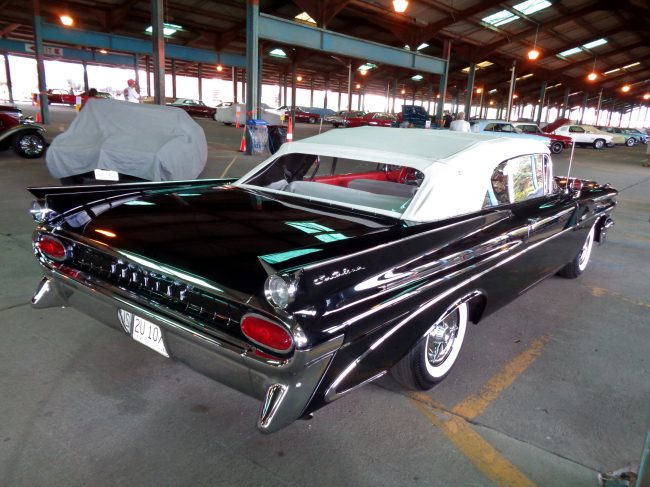
1959 Catalina convertible at the POCI Nationals, Bettendorf, IA.
Starting in the early 1970s, Pontiac seemed to lose its direction. From the late ’50s through the end of the ’60s, it was all about power and style. Sleek lines, triple carburetion, two- and three-tone Morrokide upholstery, and Wide Track! But with the crackdown on fast cars insurance-wise, price-wise and otherwise, they meandered a bit, say, starting in about 1973.
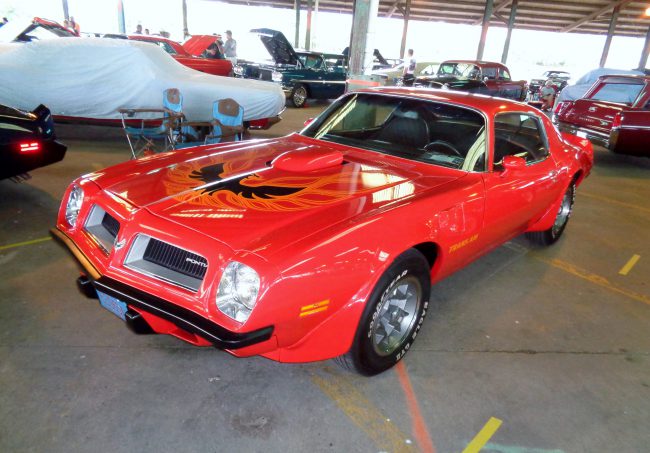
1974 Trans Am at the 2016 POCI Nationals, Bettendorf, IA.
Of course, you could still get the Firebird and Trans Am, and with big block 455 power, but the rest of the line took a different tangent. A Broughamier tangent.

1975 Grand Ville Brougham coupe at the 2016 Pontiac Nationals.
The Bonneville, top of the line from 1957 through 1970, became second fiddle to the new Grand Ville. And at the same time the LeMans and Grand Prix got Broughamier by the year as well. And why not? It was the Brougham decade.
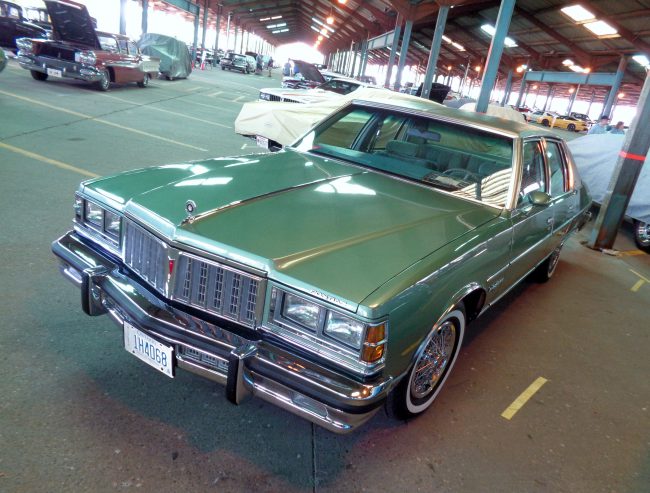
1978 Parisienne Brougham at the 2016 Pontiac Nationals.
But starting in the mid 1970s, all the land yachts and luxocruisers had to go on a crash diet. There were many factors. Changing tastes, federal regulations, CAFE standards, and the rise of imported cars. The first round was in 1977, and the Bonneville gained interior room, more trunk space and better handling and maneuverability in the bargain. And although 1977-79 B-body Pontiac sales weren’t as great as its brethren, the Caprice Classic and Impala, sales were up substantially over the gunboat 1971-76 big Pontiacs.
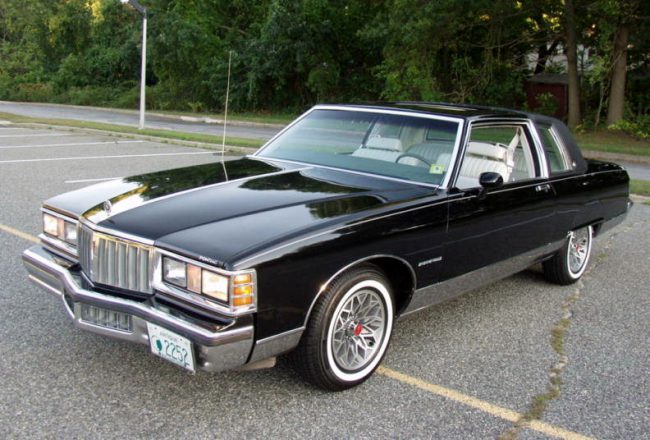
1980 Bonneville coupe. Stunning.
As with all other GM B- and C-body biggies, a more aerodynamic facelift was new for 1980. But thanks to the second fuel crisis, full-size car sales stumbled, particularly over at Pontiac.
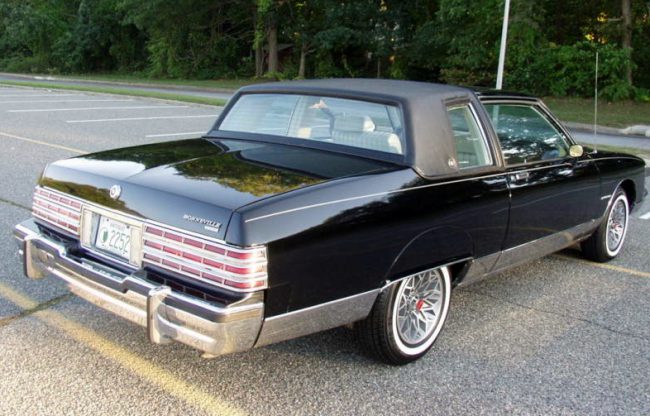
The 1980-81 Bonneville coupes were especially stunning, in my opinion. With the formal lines, a nice dark color, and the always welcome snoflake alloy wheels, these were remarkably handsome.
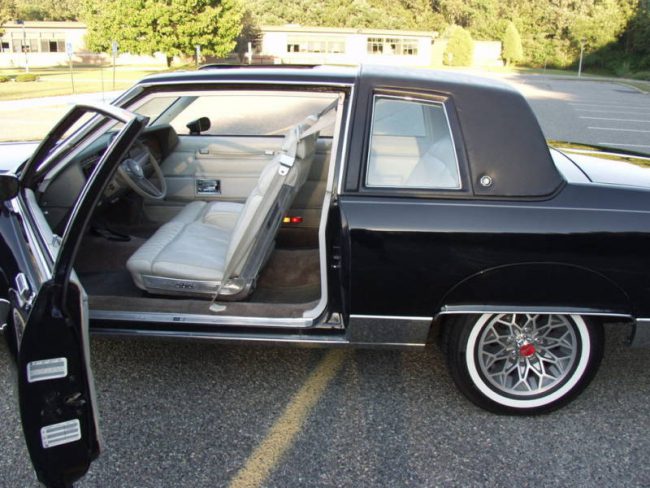
But they didn’t sell. In 1981, only 14,940 Bonneville coupes and 14,317 Bonneville Brougham coupes were built. The best selling Pontiac B-body, the Bonneville sedan, sold only 23,395 units.
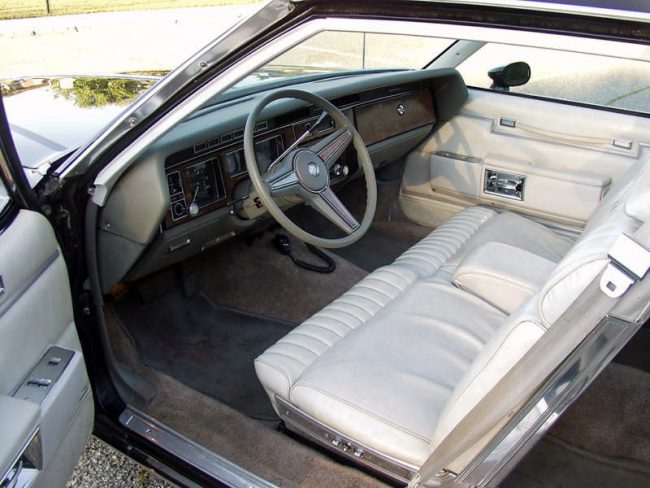
But even those Bonnies were multitudinous compared to the swan-song 1981 Catalina. Not one of them hit five-figure production. The tally? Sedan, 6,456, Wagon, 2,912 and the coupe a remarkably scarce 1,074 units. What was Pontiac to do?
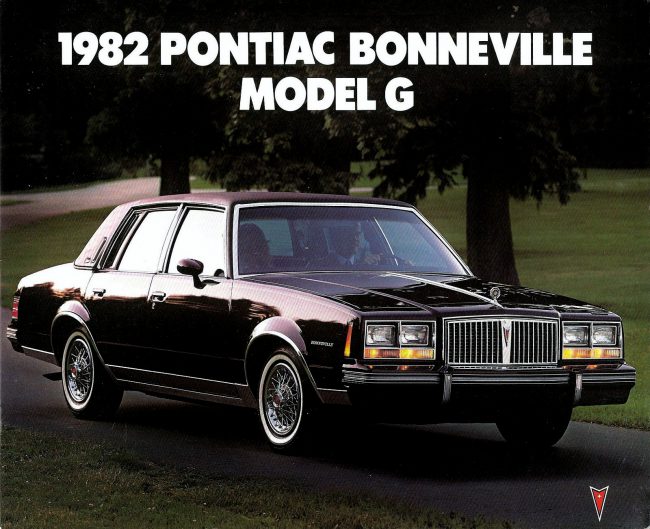
Simple. Change things up! The full size cars weren’t moving off the lot, so they were, in a somewhat cavalier move, killed off. The A-body midsize LeMans, long a mainstay in Pontiac showrooms, was given a makeover. And with the front wheel drive, compact GM family cars appearing in 1982, the A-body designation was moved to those cars, and the 1978-81 A-body cars were re-christened the G-body.
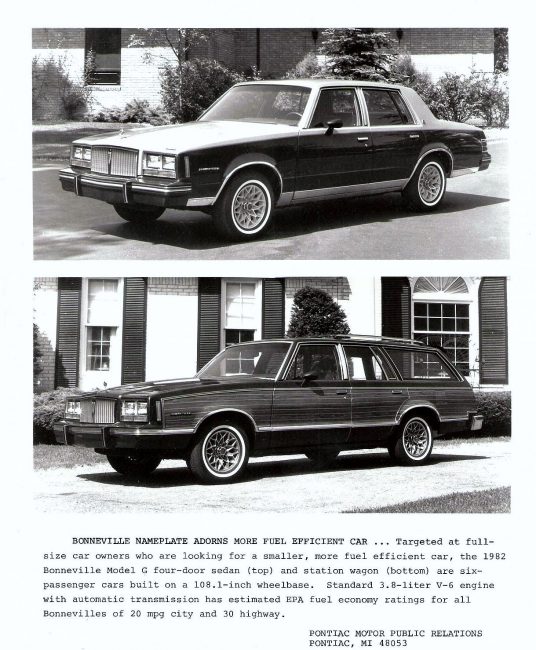
The entire nose was replaced, with a more squared off Mini-Me 1981 Bonneville-style grille, quad headlamps, and more chrome trim than the outgoing 1981 LeManses.

Interiors were spruced up as well, with plusher seats and more woodgrain trim surrounding the radio and HVAC controls.
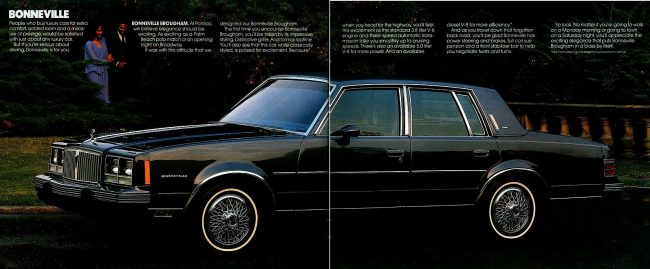
The ‘Bonneville G’ name was a hedge against possible revolt in showrooms at seeing these smaller Bonnevilles. But that only lasted one year, and in 1983 it was once again the Bonneville, available in standard and Brougham sedans, plus a station wagon with or without Di-Noc wood trim on the sides.
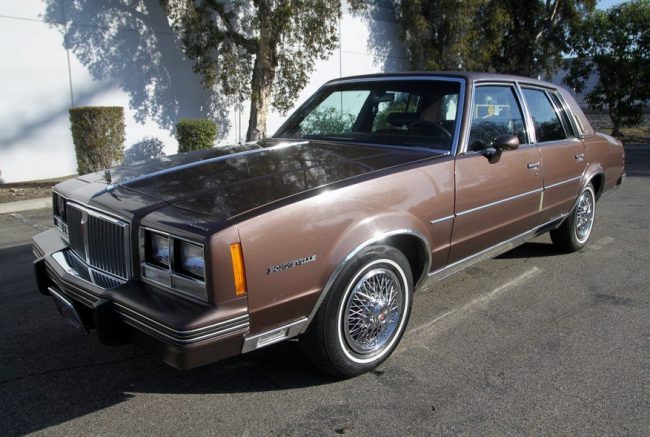
So, how did it all add up? Well, in inaugural 1982, 44,378 Bonneville G sedans, 20,035 Brougham sedans and 16,100 wagons were built. A total of 80,513, compared to 91,563 1981 full-size Bonnevilles.
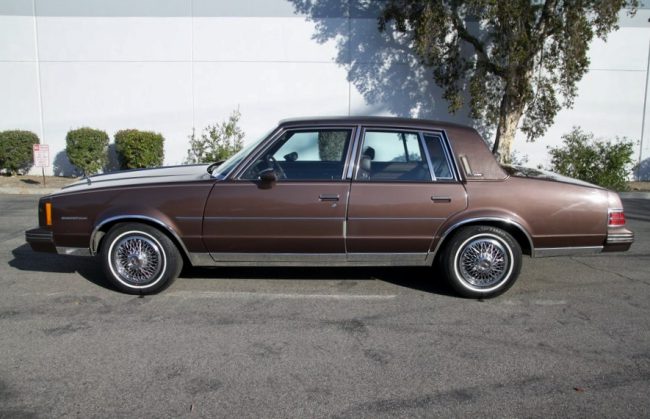
So while sales were down, there were no coupes available as in 1981, which accounted for 29,257 sales. And ’82 was a recession year, so really, sales weren’t too bad, all things considered. But it appears that even Pontiac had second thoughts about completely abandoning the full-size market, as mid-year the Canadian Parisienne, essentially a Caprice Classic with Pontiac grille and taillights, was added in sedan and wagon versions.

In 1983, sales of Brougham-class cars started picking up once again. In particular, the B-body GM cars saw increased sales, with more interest in Caprice Classics, Parisiennes, Delta 88 Royales and LeSabres than management had expected. Gas suddenly was cheap again, or at least getting cheaper, instead of going through the ceiling as many had predicted in 1981-82.

So where did that leave the G-body Bonneville? Well, it pretty much hung in there. So like in 1971-76, the Bonneville kind of played second fiddle to the larger Parisienne. It became even more noticeable in 1985, when GM dusted off the old 1980-81 Bonneville rear quarters, trunk lid and taillights, and suddenly the Parisienne went full on Brougham-style, right down to the fender skirts.
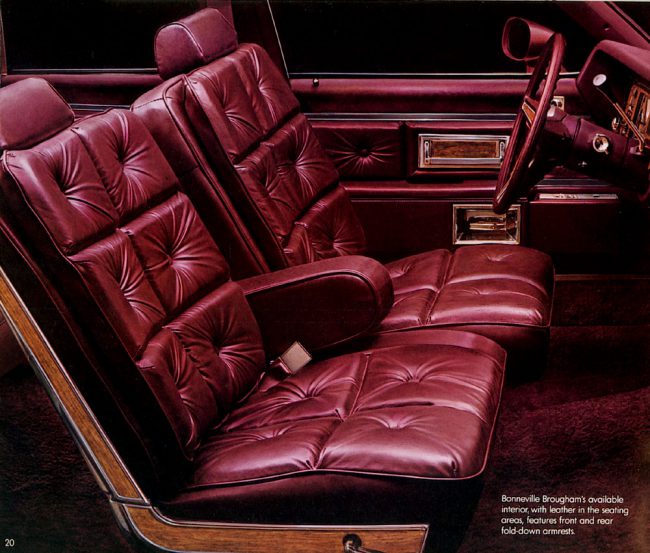
1980 Bonneville Brougham leather interior.
You could even get your Parisienne Brougham with the uber-opulent 1980-81 Bonneville leather seats, a personal favorite of mine!
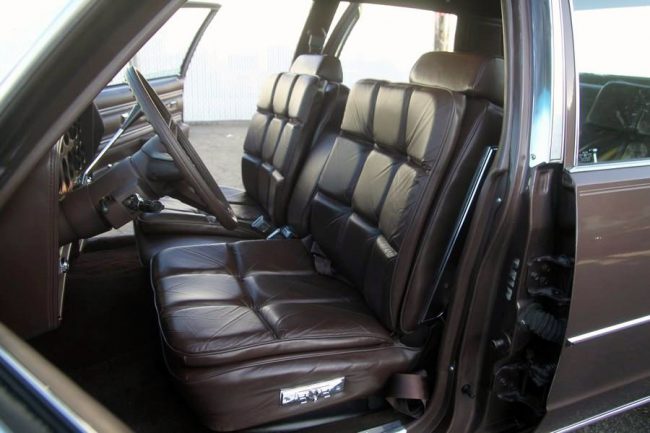
But that didn’t mean the 1982-86 Bonnevilles were really lacking in creature comforts. Heck no!
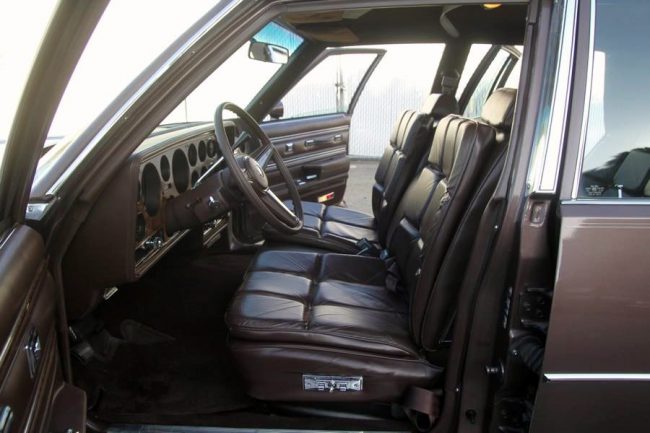
If you plumped for the 1983 Bonneville Brougham sedan, you could have ordered this very plush leather seating. The same seats, upholstered in velour, were standard on the Brougham sedan. But leather was pretty rare on these.
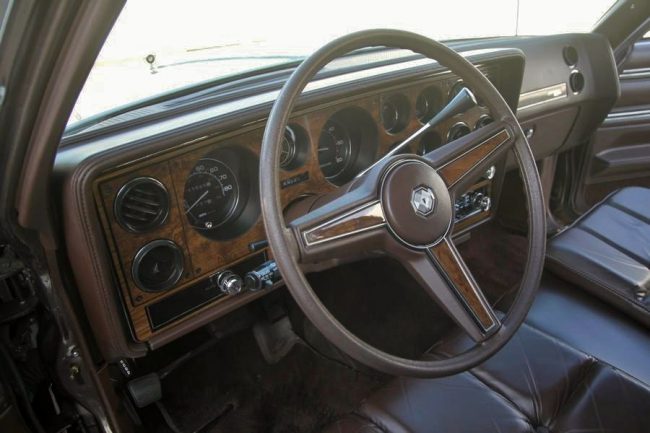
How rare? The triple tobacco brown example featured here is the very first one I’ve seen. And I remember these G-body Bonnevilles very well. A friend’s mom had one back when I was 7 or 8 years old.
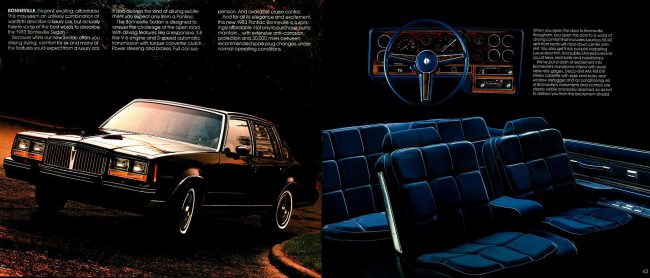
Not a Brougham, and no leather of course, but it was a nicely equipped LE in medium blue metallic with a navy blue cloth interior, and the same full wheel covers as shown on this example in the 1983 brochure. Her dad had a light blue ’78 Grand Prix LJ. They definitely liked midsized Pontiacs!

Sales of the G-body Bonneville rose a bit for 1983, its sophomore year. 83,889 were sold, compared to 80,513 in 1982. The same three models were on hand, standard sedan, Brougham sedan and the wagon.
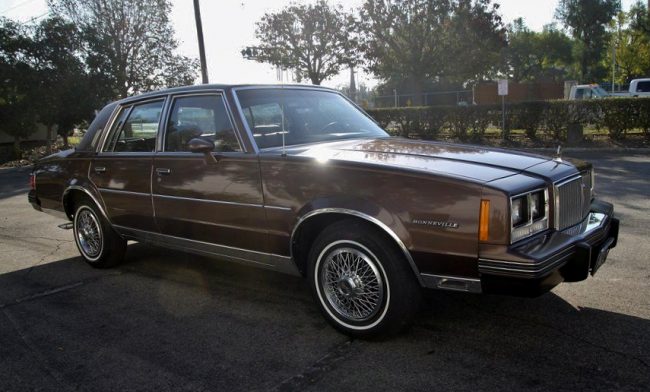
1983 would be the last year for the Bonneville wagon, as the front wheel drive Pontiac 6000 wagons came on line. It, the smaller Sunbird wagon and the bigger B-body Parisienne station wagon would round out the Pontiac longroof lineup through the end of the 1980s.
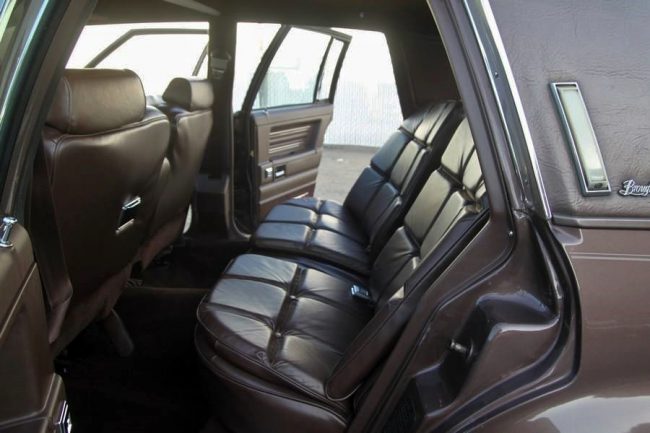
Much has been made on a certain unnamed, GM hatin’ site about how terrible it was that this vintage of GM midsize did not have rear windows that rolled down. Oh the horror! Never mind that coupes from most manufacturers, foreign and domestic, had had fixed rear quarter windows since the mid-1970s. And the higher-end cars, the Bonneville Broughams, the Cutlass Supreme Brougham sedans and the Regal Limiteds, all were equipped with the famed GM meat-locker air conditioning, probably 92% of the time.
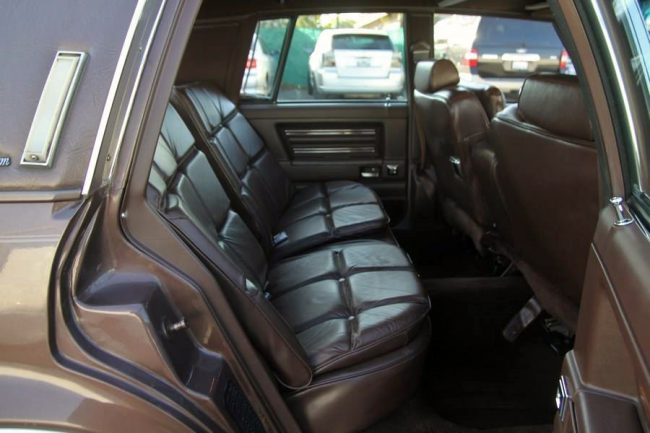
Seriously, how many people would have spent nearly ten grand in 1983 dollars on a loaded new Bonneville Brougham, and not use the A/C? Come on now!
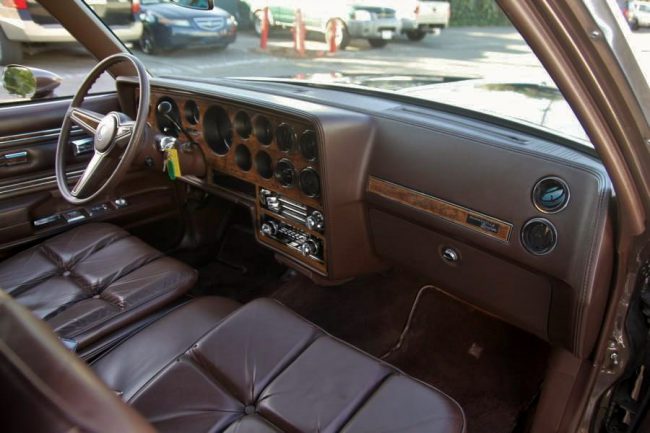
Perhaps there were some real cheapskates out there, who didn’t use the A/C, or didn’t order it and drove with all the windows down instead, but let’s be honest, most people buying a new car were going to get A/C, and were going to use it. And even the el-cheapo zero-option Dept. of Water-style Malibus had opening rear vent windows to augment the roll-down front windows. I pretty much drive my personal cars with the air on all summer, and even when it’s somewhat cooler outside, I put down the front windows only, and open the sun roof. Modern conveniences, dontcha know!
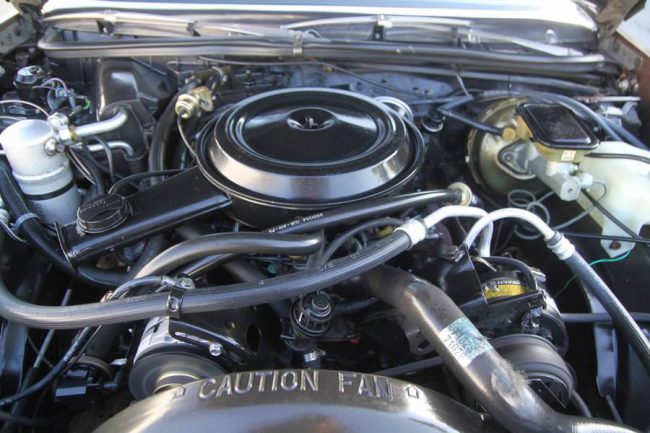
Base price of the 1983 Bonneville Brougham was $9,399. Of course, the Brougham floating-pillow style seats, deluxe Tampico carpeting, and opera lamps were standard, but such items as whitewalls, wire wheel covers, and the 150-hp 305 CID V8 were optional. Base engine in ’83 Bonnies was the 3.8 liter, 231 CID V6 with 110 hp. Our featured Brown Brougham, however, has the bent eight.
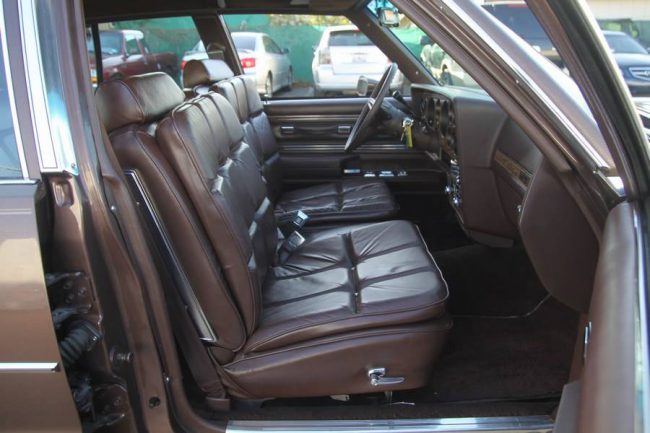
Our featured Bonneville is richly equipped, with Cordova padded vinyl roof, the aforementioned leather trim, power driver’s seat, passenger seat recliner, cornering lamps, power windows, power locks, and more. It’s a real time capsule too! The actual auction is long gone, but it had to be a low-mile example. And as a fan of the Brougham Era, I love the triple tobacco brown color combo.
This car was posted on my usual FB haunt, The American Brougham Society, by a friend of mine, Kevin Campbell. I’d never seen a 1982-86 Bonneville Brougham with leather interior before. That, combined with the triple brown color combination, meant that I had to write it up! It was on ebay when he first saw it, but the car sold long ago. What a time capsule!







5 Comments
Tom,
I always got angry at how Pontiac kept degrading the Bonneville name, the good news was that it kept coming back, over Grand Ville and Parisienne. Typical of GM marketing, “long term” meant 6 months.
I love the Bonneville that came after this one.
Interesting to think how different this was from the similar size on the inside 6000 STE that was new that year. To sell both was a challenge because the two groups of buyers just did not have much in common. Yet the traditional buyer doesn’t think the G is big enough and the STE buyer doesn’t think it is foreign enough. Not sure what the solution really was.
Okay, I get that tastes vary, but defending those stupid fixed rear windows went to far. This represents what was (is?) wrong with GM. I’m sure someone did some analysis that proved they get used .5% of the time, but what GM doesn’t get is that car buying (like most decisions) is not completely rational. People look at this and get annoyed, then think GM is out to save a few bucks, and then wonder where else they are saving a few bucks on.
I’ve always loved the big Bonnies but I was taken by the G’s as well. I would love to find a beautiful example like this brown one. Nice to see someone keeping the G’s alive. Simply stunning!